Rise of the Ronin Review
A historical epic with too many katanas in the fire
At one point in the not too distant past, the video game community was clamoring for experiences set in feudal Japan. The setting was rarely explored, and yet seemed like it would be full of possibilities, from the ancient legends to the legendary samurai. Finally it seems, a few years ago the drought was declared over and we got some great games inspired by the time period. Between Sekiro, Ghost of Tsushima, and Nioh, there's been a wealth of options for fans clamoring to be a sword-wielding hero, exploring beautiful landscapes in the Land of the Rising Sun. The latest title in this batch is Rise of the Rōnin, a third-person action RPG from Team Ninja.
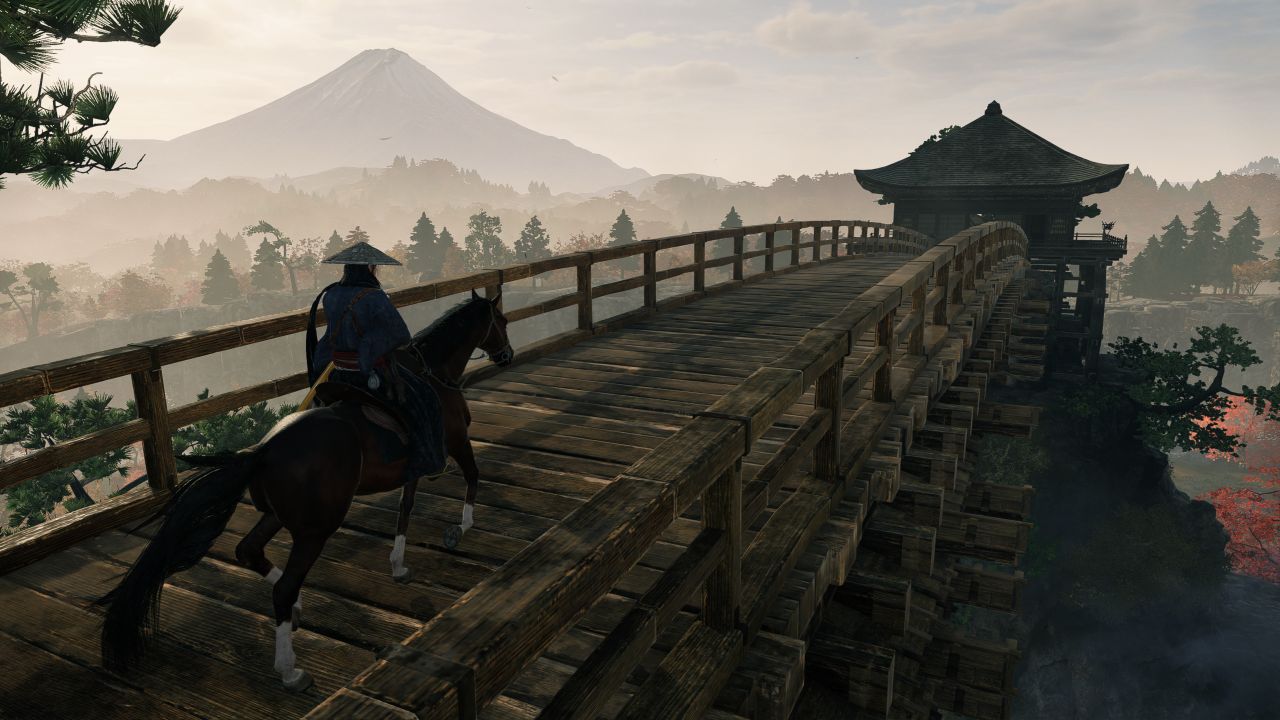
The title transports players to 1850s Japan, the Bakumatsu period and a time of big changes for the nation. The foreign delegations from America, UK, and France have arrived on the shores, seeking trade and formal alliances. Not everyone is welcoming to these foreigners, and a rift begins to grow within the nation, between the pro-imperial nationalists and the shogunate supporters. Players create their character and assume the role of a Veiled Edge, one of two highly skilled twin warriors whose clan was wiped out years ago, and thus they've navigated the world as warriors for hire. One night, tasked with infiltrating the US Navy ship and stealing an important document, they are defeated by a Blue Demon warrior, and one twin loses their arm and disappears. Playing as the other twin, you will explore the open world across a multitude of hours, navigating the political and criminal challenges of the land, in search of your other half.
The game's setting initially appears promising – but ends up offering a fairly typical open world narrative. Things also get off to a rough start with a somewhat poorly designed opening hour, which barely lets you get comfortable before throwing you into a boss fight that will take a few attempts. This is the first of many ideas the game borrows from others, in this case the Souls series. It's also not very polished, as you explore some cramped environments of a ship and watch as bodies of soldiers disappear through the floor. But thankfully, things improve once you finally leave the tutorial and are set free in the open world. You will follow a couple of story threads that focus on finding your twin (who doesn't take long to re-appear on the side of the enemy, of course), as well as choosing to side with the pro- or anti-shogunate clans. There will be plenty of side quests and one-off missions to follow, which all unravel fairly predictably and are usually brief. The game features a number of historical locations and landmarks, and even historical figures such as Matthew C. Perry.
You get to explore this world with a custom created character, and the developers went a bit overboard in terms of features. You can customize not only the usual facial elements, and general body weight and height, but also delve deep into things like eye lash length, nail polish, different styles of hair bangs and colors, and body hair - aspects that are barely or not at all visible during gameplay. The level of detail feels both impressive but also a bit unnecessarily. It also seems for naught, as you will encounter the other twin very rarely, and yet could spend considerable time creating them.
Trying to squeeze as many mechanics as possible into every facet of the experience seems to be the general underlying motif of - whether you refer to it as everything and the kitchen sink, or throwing things at the wall to make them stick. For example, the narrative isn't linear – you can choose to side with the two opposing political movements, which leads to some story changes, as well as missions that can only be completed representing one of the two sides (though you can replay the other side later). There are also occasional dialogue options, letting you occasionally ask for more details, and change the tone of the conversation. The developers even implemented auxiliary features like being able to see which choices other players preferred. But all of this is rudimentary, and while you can alter the fate of some characters and the direction in which the story unravels, the pacing just becomes too much of a slog over a decade of the Bakumatsu period, with time jumps. It also doesn't help that the game keeps relying on somewhat silly clichés, like multiple times having to fight a boss only for them to become a friend immediately after, or just sit down to talk.
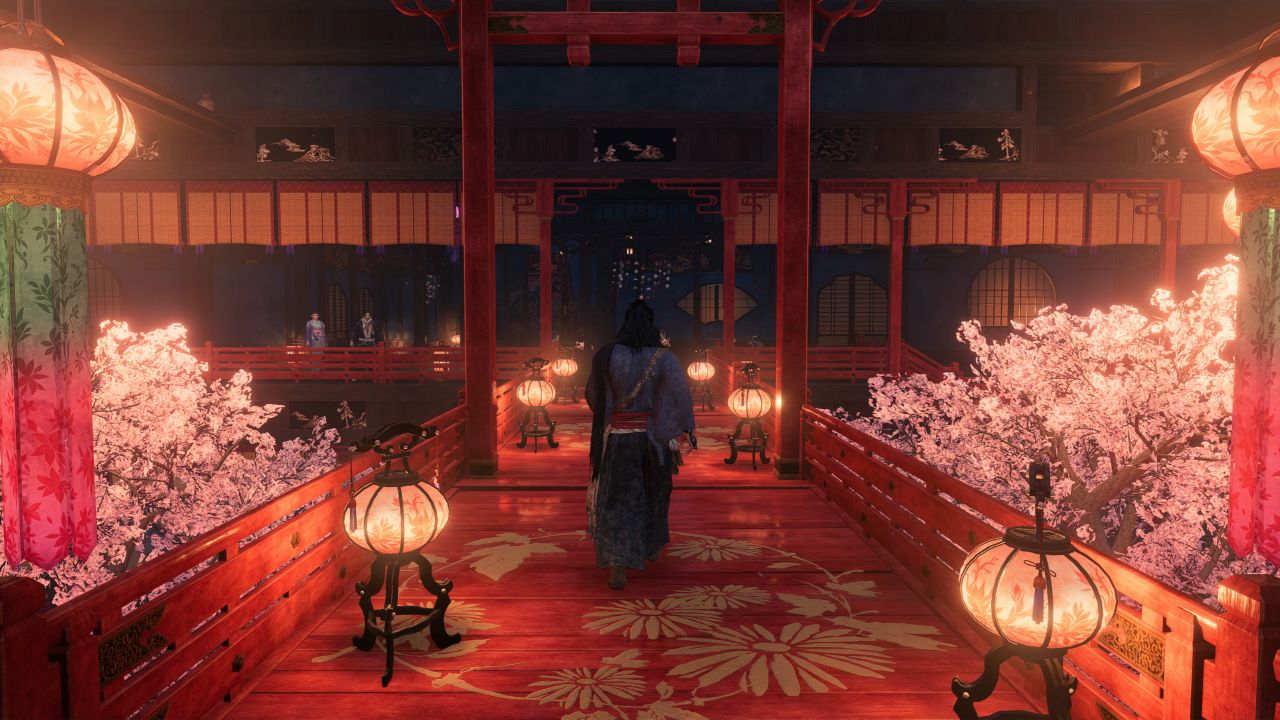
The overbearing design philosophy continues into the action. Developers Team Ninja are probably best known for their combat game acumen; from Dead or Alive to Ninja Gaiden, Nioh, and most recently Wo Long: Fallen Dynasty, the team have always put fighting mechanics first, and have managed to create an impressive roster of games to showcase various techniques and styles. With Rise of the Ronin's combat, they don't go as flashy or fast paced as their recent Wo Long or Nioh entries – but it's still plenty fast and involved. Things seem deceptively straightforward at first – your input options are a single primary attack, as well as a dodge, block, jump, and a counter move (called counterspark). It's all tied together with the Ki meter (stamina). You get to equip two primary and two sub-weapons; the primary options include around 8 weapon types, from the katanas to odachis, greatswords, spears and sabres. As you might expect, each has their own combat style, with more that can be unlocked overtime. The sub-weapons are the ranged options, such as shurikens, bows, pistols and rifles (to match the mix between old and new Japan), and even a flamethrower. Typical single-use items can be consumed to give yourself more attack power, apply special effects to your weapons, heal, and apply resistances.
As you encounter the first groups of foes in the prologue and later in the open world, the shape of the combat style begins to form. It's not quite a Souls-like, though it certainly tries very hard to be, as you lock-on to targets and carefully manage your stamina to be able to attack and evade as needed. You can hold a block for a while to slow down the frantic pace and just let your stamina absorb the hits, but eventually enemies resort to their red-glow attacks which cannot be blocked, and deliver devastating combo moves that slice through your health bar. Performing accurate counters leaves your enemy vulnerable to a few strikes, and eventually exposed for a stronger critical attack - but they can do the same to you.It's tough, no doubt, but with some patience and the counter-attack move, victories become commonplace - and they have to be, considering how frequently you are in combat.The developers did also include a three-level difficulty setting, which can be changed at any time to make the title more accessible, and that's always good to see.
Using different weapons can alter the feel of the combat – but even within each weapon, you can unlock new fighting styles, just like stances in Nioh or Ghost of Tsushima. This vast variety is not only for the player’s benefit to find what works best, but it's also necessary because some enemies are either vulnerable or resistant to certain weapons and / or specific stances. Helpfully, a UI indicator lets you know when a weapon or stance is not effective. Some weapons have just a few stance options, while others can have over 5, with unique animations and flair, alongside satisfying takedowns and bloody limb eviscerations. Each weapon type has its own familiarity rating, too, which increases the longer you use it over the course of the game, providing passive bonuses.Further, you have a grapple hook that can be used not only in traversal but in combat to throw things at enemies, and eventually the enemies themselves. While you do only have one attack button, there is a button modifier that lets you perform different moves depending on the weapon and style equipped. Pair that together with the ranged weapons and the counterspark, and the combat options can start to feel almost overwhelming.
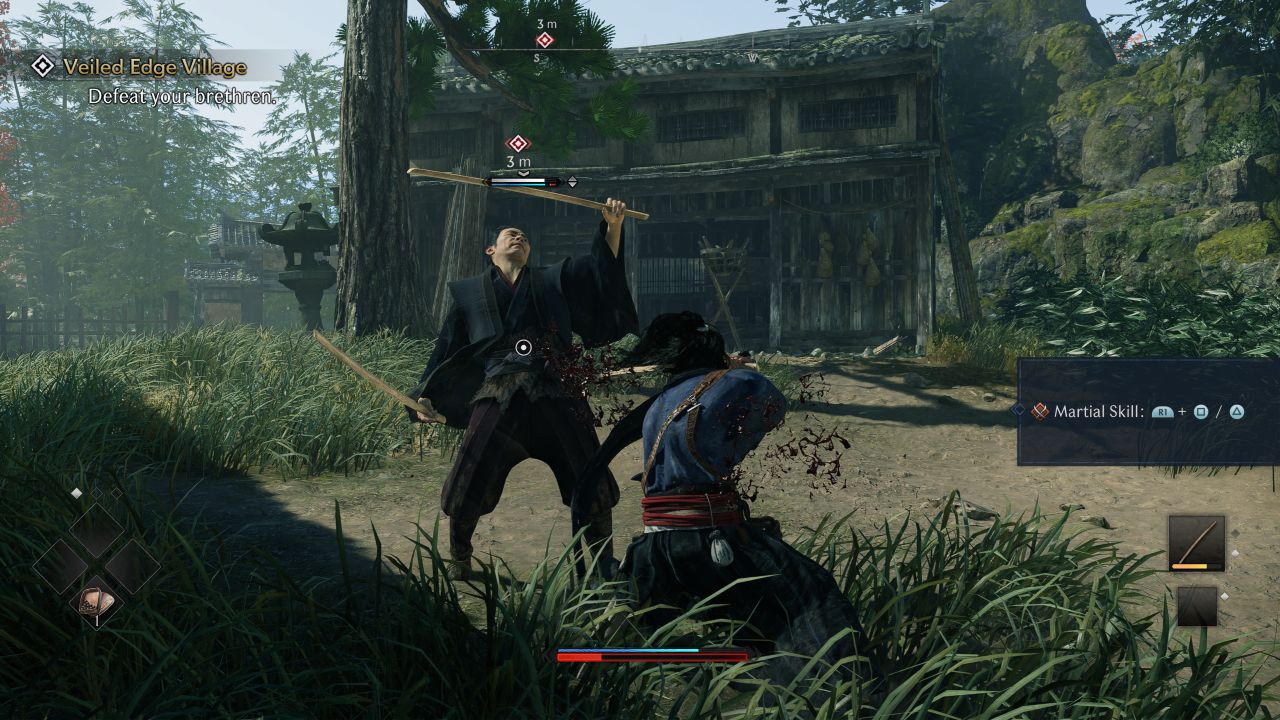
One of the main annoyances with the combat, aside from the heavy difficulty spikes for boss battles that grow more frustrating as you reach the latter half of the game, is the overuse of the R1 button. This poor shoulder button sometimes gets more of a workout than your primary attack, and leads to unintentional mistakes. First, it's used to swap between the two equipped weapons during battle. It's also used to scroll through D-Pad loadouts for consumables. You must also hold it to swap between fighting styles, this time by using the right stick. It's further used to perform above-mentioned special attack modifiers, as well as a Blade Flash move to shake blood off of your weapon and regain a bit of stamina. Outside of combat, it again does most of the heavy lifting – it's the button used to interact with the world, from talking to characters, mounting your horse, and sheathing your weapon, to looting chests and fallen enemies. In the midst of combat chaos, you might find yourself unintentionally jumping on your horse or performing other actions, while all you wanted to do was switch combat styles or weapons,and losing half your health bar. The enemies are relentless, in typical Souls-like fashion, so having this many critical aspects of combat tied to a single input is just a bit uncomfortable.
The frequent stress of combat can get to be too much for some, so you might find yourself resorting to stealth when possible. The simplistic stealth mechanics let you eliminate most basic-tier enemies with a single takedown, and thanks to very limited AI behavior, it's easy to abuse their lack of hearing and vision. You can hide in occasional tall bushes, and there is a surprising amount of verticality to the game, with lots of opportunity to grapple onto rooftops. Once you unlock the skill tree far enough to perform multiple assassinations, it becomes satisfying to clear two or three enemies at a time without having to get into another lengthy combat engagement. It also helps take a chunk of health from bosses and tougher enemies, at least shortening the time of combat that is to come. And of course, there is an item that lets you send out a pulse to see nearby enemies through walls.
While the combat has so many (perhaps too many) options, and borrows from Souls games, the open world in turn appropriates the tropes of Far Cry and Ghost of Tsushima. The map is split up into areas, with a variety of repeating tasks. You can clear standalone enemy groups inside small villages or temples, letting you choose a head-on approach or stealth, and turning them into small outposts. You can go hunting for collectibles, defeat random enemy ambushes, pray at shrines, and take photos. Exploring the open map is fairly effortless, thanks to having a deployable glider and a horse. One welcome feature is the streamlined ability to simply select a point on the map and your character automatically calls and mounts their horse and begins to gallop, without having to fiddle with the intermediate steps. You can also fast travel for free between any anchor banner points you've previously unlocked – and yes, some require climbing a quick tower. The map isn't too big and tackling the optional content sets a good pace – but that's because the game has multiple open world maps, which get unlocked over the course of the story. While there's no shortage of content, you will unlock more than the starting world map over the course of the story, and it makes the game lose momentum. The developers also never stop trying to cram elements borrowed from other games, as the final stages of the game introduce the concept of fighting for control over map districts between competing factions.
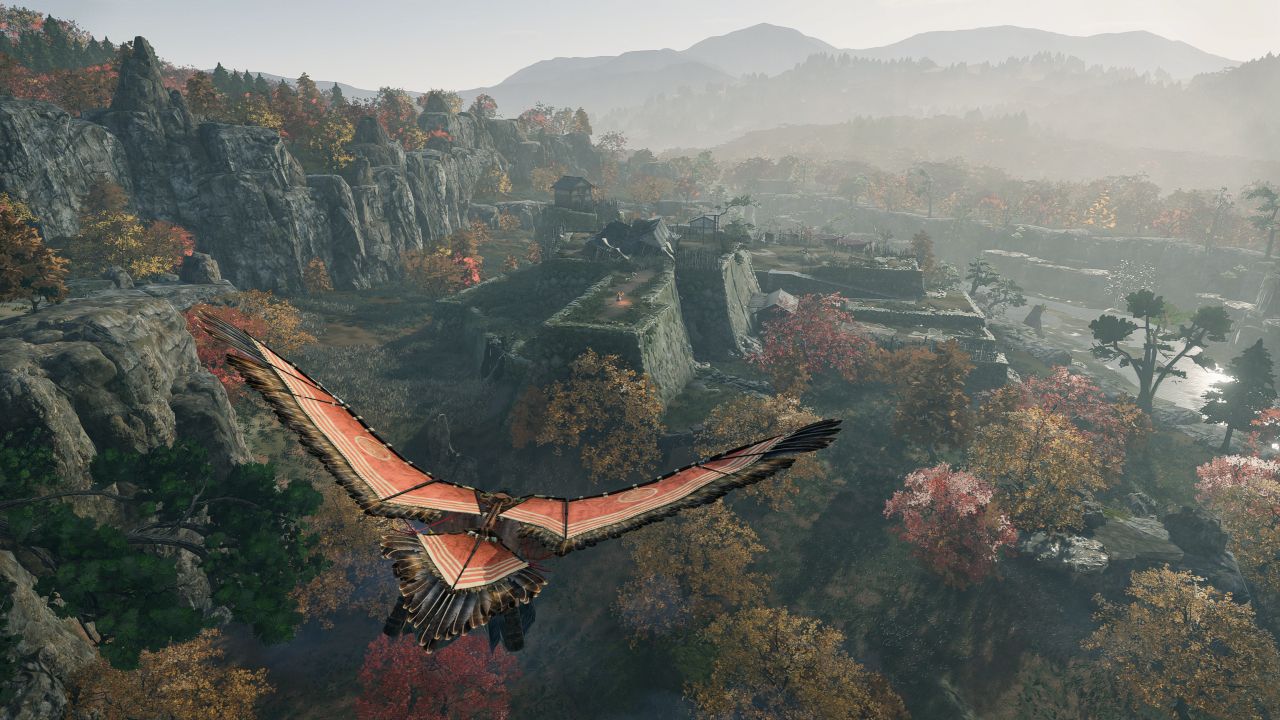
Some other open world activities let you partake in minigames to practice combat, gliding, and even gambling. In order to succeed in these challenges, and in combat overall, players will need to manage their inventory. New armor and weapons are found and awarded with good frequency, so every hour or two you need to perform an inventory clear out, by either selling to vendors or deconstructing for materials. You get so much loot that the game even has an option to automatically do either of the above actions with specific quality tiers chosen by the player. Gear comes with a basic defense stat, alongside a bunch of random passive bonuses, as well as gear-sets mechanic for even more extra stats. You can buy new gear or upgrade your existing pieces, and transfer those passive bonuses between items. In traditional open world RPG fashion (and unlike Souls games), all these improvement mechanics are largely unnecessary, as you find new and improved gear often enough. There are multiple different currencies, for different vendors and factions, which again complicates things but doesn't really feel like it adds any more value to the experience.
You earn experience from open world activities, missions, and combat, which goes directly into levelling up and granting skill points. But there is also a secondary Karma system, which acts like it would in a Souls or recent Jedi games, by letting you amass extra experience that can only be "banked" at the banner checkpoints. Getting killed means losing those points to the enemy, but you can get them back by defeating them –dying a second time makes it a permanent loss. The system isn't very punishing, and any losses incurred are typically not very significant, as you rarely go for very long without interacting with a banner.
The skill trees are also very extensive, and fall into the four main stat categories of Strength, Dexterity, Charm, and Intellect. At the start of the game you can also choose to focus some early bonus skill points into one of these four categories, or just start with nothing at all, again Souls-like style. There are generic skill points that can be used for some skills, while others require specific skills that are only for that tree. Most skills are related to combat, but some are targeting other aspects, such as unlocking new dialogue options to lie or intimidate, or getting discounts at vendors.
While open world exploration is typical, there are also self-contained missions that occasionally crop up. These isolated instances let you explore a somewhat traditionally designed level, often featuring multiple approaches to your destination, thus letting you bypass a lot of combat entirely if you prefer. The missions are brief but have an entire dedicated planning screen, because you can bring along your choice of AI companions or other players. This is the game's way to offer multiplayer, as you can search for random lobbies or join your friends directly and fight through these levels together, including hot-join.
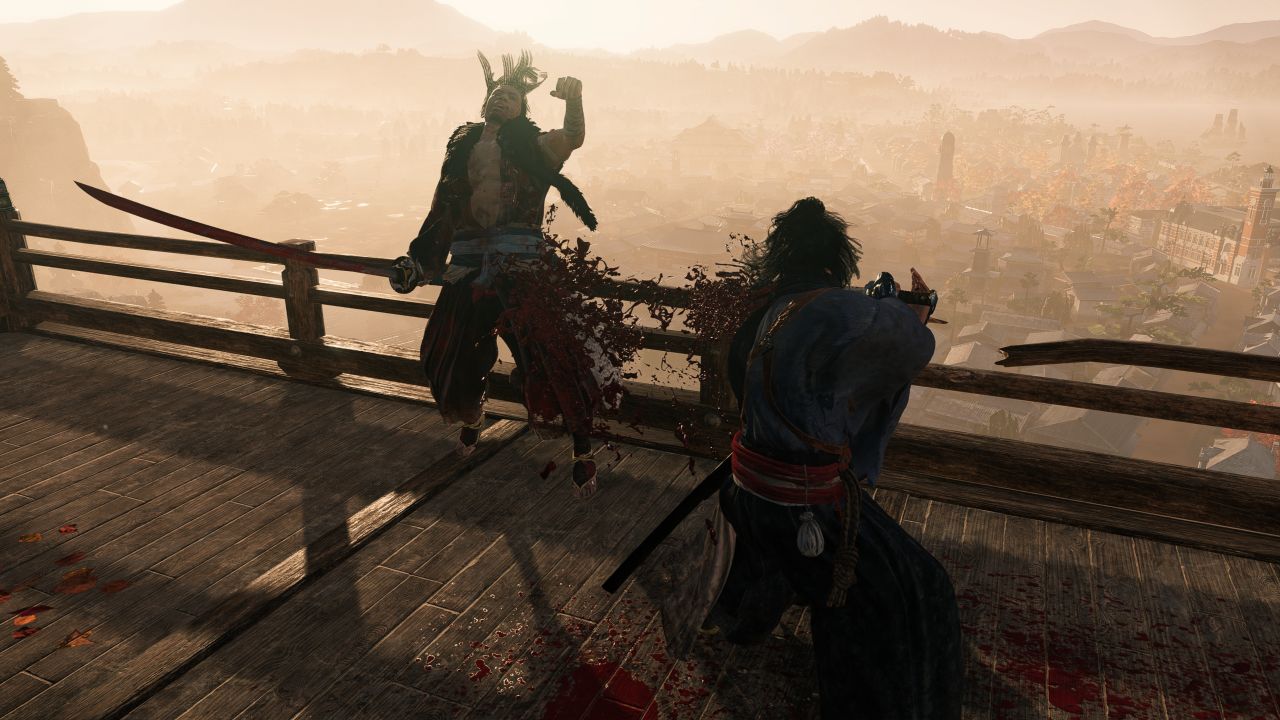
Help from other players is preferred to AI companions, as they tend to be ineffective. The enemies will almost always target the player, and so your AI friends mostly stand around and deliver the occasional attack. The twist is that you can switch control to the AI characters, to wield their weapons and moves, and get a few free hits in while the enemy re-targets. But since the combat is already hectic and complicated enough, this feature is less for damage dealing and more for survival. It lets you have a few extra lives in a battle, and you can switch to another character if you are defeated, and revive yourself and others while consumable supplies last.
The companions that you bring to missions are introduced over the course of the story, and in a bit of typical Japanese game design, there are social elements. You can do their bond/loyalty missions which are quick bursts of standalone generic stories, helping them with some problem or enemy. You can converse with them, give gifts, and initiate romance - all for a slight stat boost and item rewards. You have a home, where you can display some banners to get passive stat boosts, chat some more with visitors that can stop by depending on what you have in a display case, rest to pass the time, and outfit an armor stand with your favorite looks. Speaking of armor display, there is even an MMO-like system which lets you swap the cosmetic appearance of your weapons and gear.
The sheer amount of mechanics is truly notable, but you may wish that some of them were trimmed or dropped in favor of spending that time and budget on the presentation elements. The visuals have a performance-focused or quality-focused setting, but while the quality mode looks a bit better, this is still not exactly a showcase of PS5 power. The texture quality, visual effects, cutscenes, and animations outside of combat are all fairly subpar, and the draw distances can be poor with noticeable object, shadow and texture pop-in. Perhaps more importantly for some players, the framerate remains steady in combat in performance mode, though it certainly dips at times out when exploring. In quality mode, it is much less stable, and the animations are not smooth enough to make up the difference, which can negatively affect your combat ability.
The art design is occasionally nice, but this isn't anywhere near the level of something like Ghost of Tsushima. It's interesting to see the urban centers that feature European and American style buildings alongside the traditional Japanese longhouses, but the level of environmental detail and interiors is not very extensive. Many streets are almost deserted of NPCs, but the changing weather and time of day does add to the atmosphere somewhat. As already touched on, the voice acting and sound effects leave much to be desired - though players will recognize the eerily familiar sound of slashing weapons against flesh that is very Souls-like. A variety of minor visual glitches were also encountered, though none too severe.
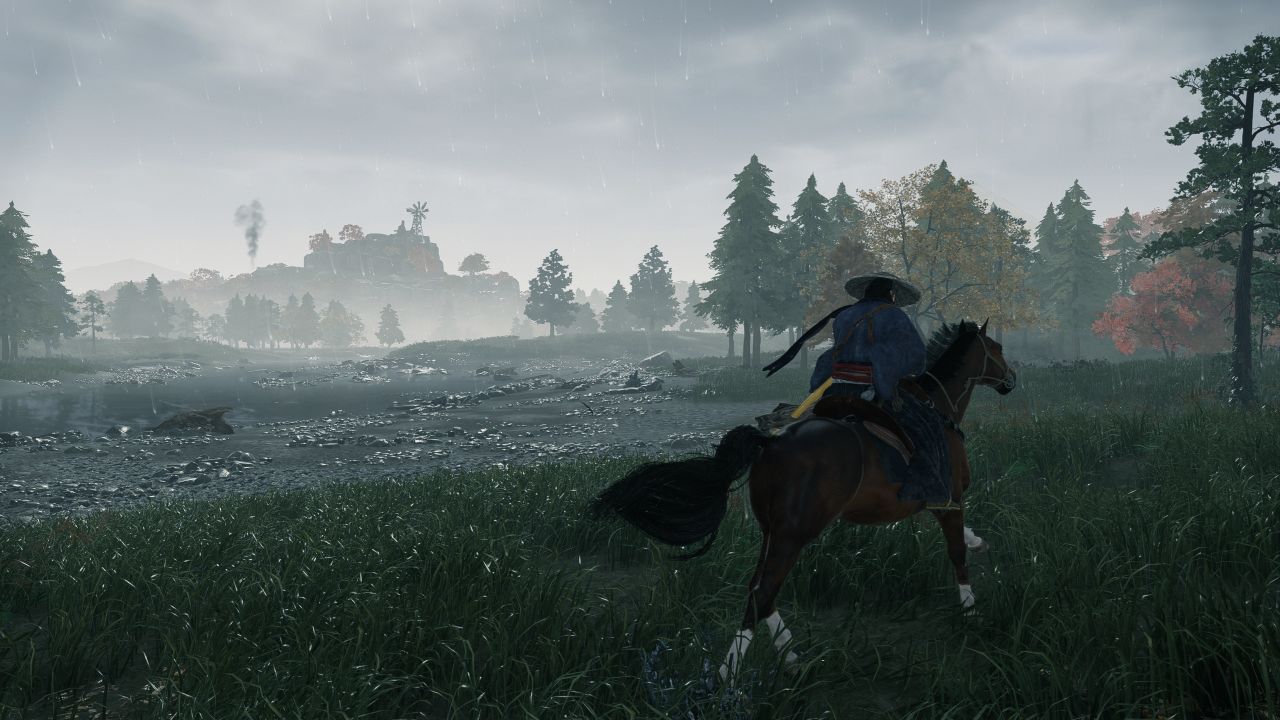
Developers Team Ninja are well-versed in the art of combat, but they have been trying to branch out, and Rise of the Ronin feels like their most grandiose attempt yet. There was clearly an attempt to stuff the game with as many ideas as possible, borrowing from the Souls-likes to the more typical Western RPGs, and even throwing in the Japanese elements like relationships. All of it works at a basic level, but doesn't really gel together in any sort of satisfying way over the course of 30+ hours, as the narrative is bogged down between trying to be a historical epic and an engaging video game. The individual pieces vary in quality, with almost every element seeming overdesigned, and yet the final product is not any greater than the sum of its parts.
 Comments
Comments




















